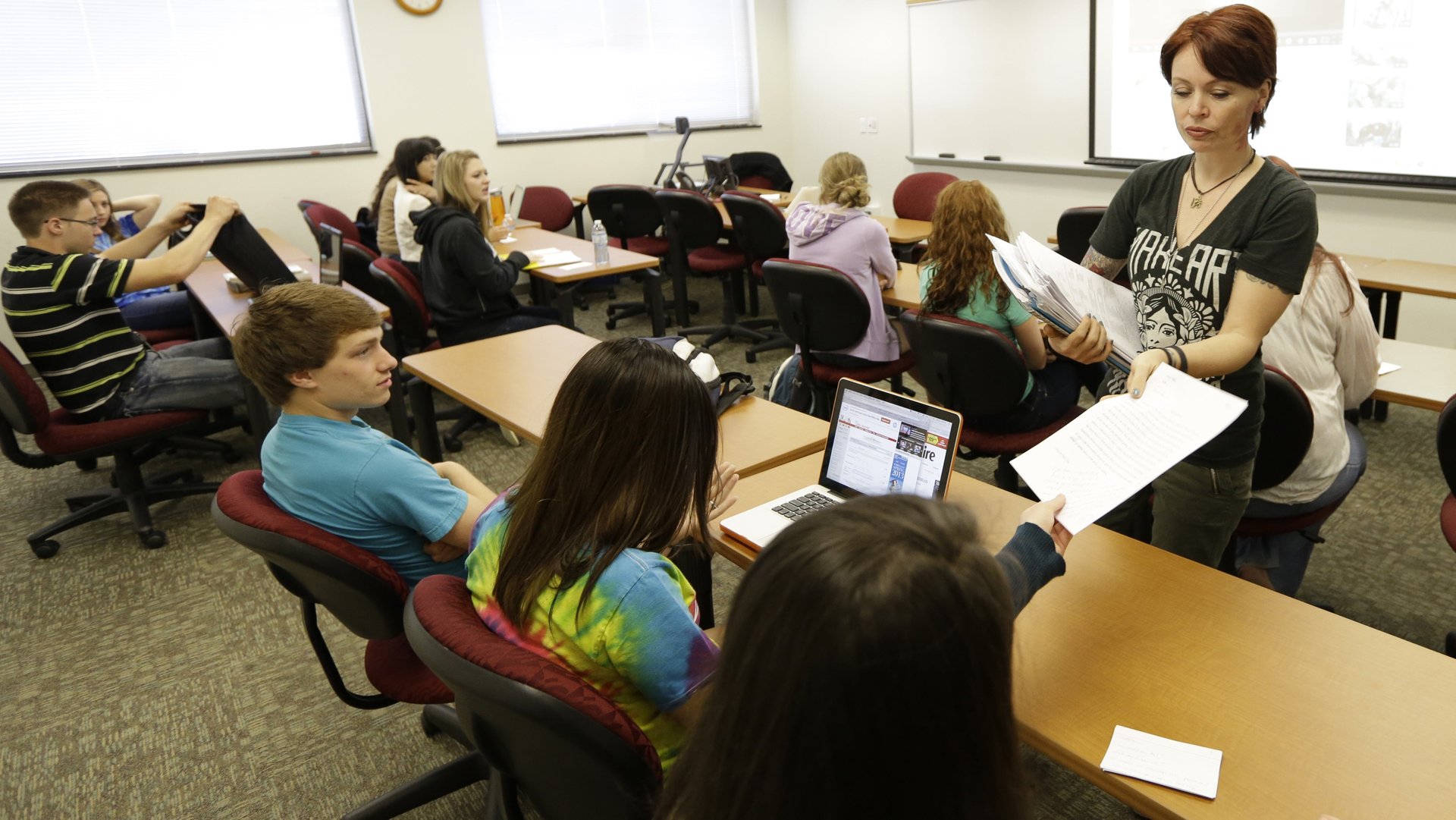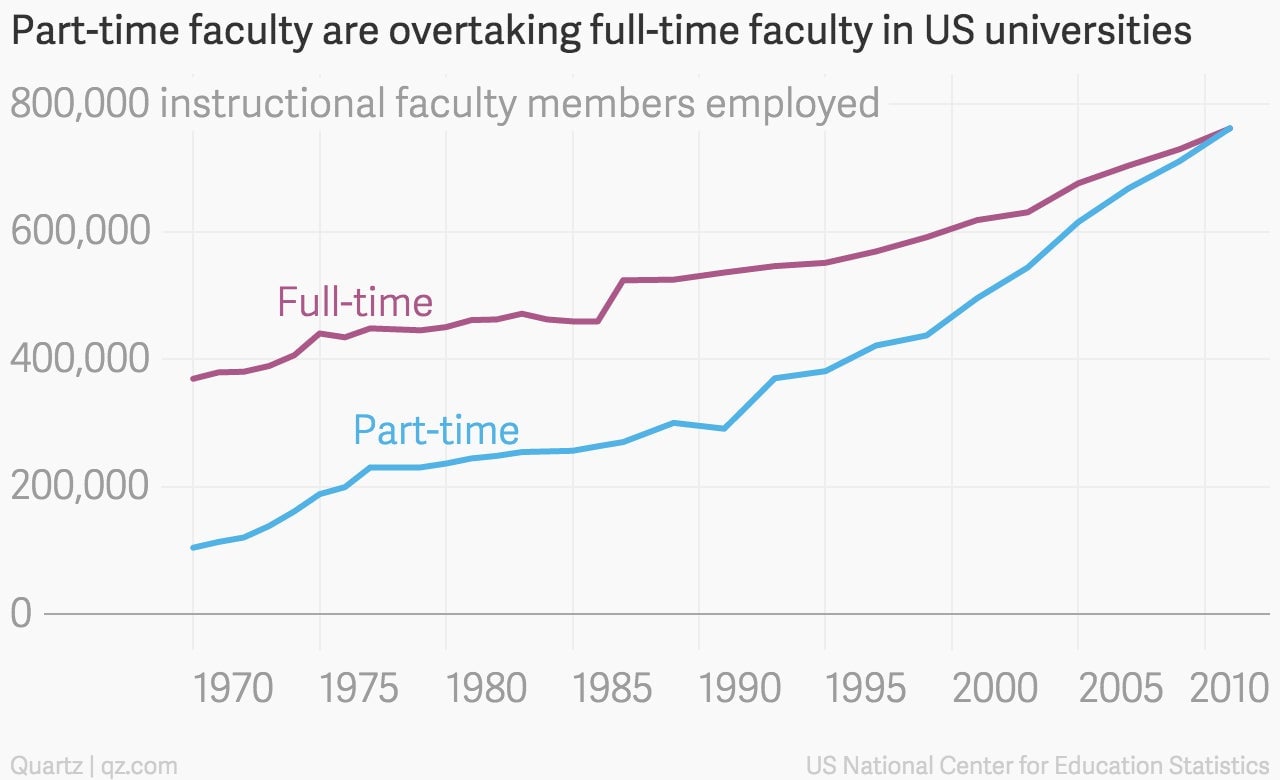25% of part-time university faculty in the US need government aid
Half the teachers in US universities and colleges are part-time faculty. And 25% of those are receiving government aid because their paltry salary isn’t enough, according to a new report (via Slate) out of the UC Berkeley Center for Labor Research and Education.


Half the teachers in US universities and colleges are part-time faculty. And 25% of those are receiving government aid because their paltry salary isn’t enough, according to a new report (via Slate) out of the UC Berkeley Center for Labor Research and Education.

These people are enrolled in at least one of the following public assistance programs: Medicaid, Children’s Health Insurance Program, Temporary Aid to Needy Families, Earned Income Tax Credit (EITC), or the Supplemental Nutrition Assistance Program, also known as food stamps. About 20% of families of part-time faculty receive EITC, according to NBC (and confirmed to Quartz by report co-author Jenifer Macgillvary).
A number of adjunct professors have other jobs, and don’t come in with the doctorate required of a full-time professor. Many journalism professors, for example, hold newsroom jobs and teach a class part-time. However, US universities and community colleges are also offering adjunct roles to many instructors with doctorates, without the benefits and job security of a tenure-track position. The median pay for a part-time faculty member in the US was $2,700 per course, according to a 2010 survey (pdf, pg. 9) of associates, bachelors, masters, and doctoral instructors. For an imperfect comparison, the average full-time instructional staff member (pdf, pg. 12) at a US tw0-year or four-year degree-granting school in 2010-2011 earned $73,556.
And the rate of adjunct professor positions is growing faster than the rate of full-time professors in the US:

“I’m very proud of my doctorate, it was well-earned, but in terms of the work force, it’s a penalty,” for-profit university adjunct professor Wanda Brewer told the New York Times.
In some fields, it’s nearly impossible to get a full-time teaching job anywhere unless you hold a doctorate from one of the most prestigious universities. For example, half of US and Canada’s computer science professors come from just 18 universities. The humanities are even harder to crack—half of US history professors come from eight universities.
America’s higher educational institutions have yet to recover from the budget slashes they faced during the Great Recession. As of November, most states were spending less per student than they did before the recession, according to the Center on Budget and Policy Priorities. Those cuts have come in part from eliminating full-time faculty positions.
Part-time faculty have tried to fight the low wages with a National Adjunct Walkout Day. State University of New York at Plattsburgh adjunct professor Karen Hildebrand wrote about the need for systemic change for the Washington Post:
Instead of signaling “Get used to it—this is the world you will inhabit, we will use you, wring everything we can out of you and throw you out,” educators should be signaling, “Young College Graduate—we will help you make the world a better place.”